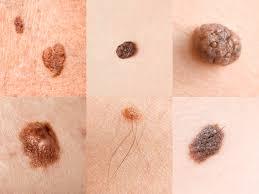Patrocinados
Skin Cancer Prevention Tips for Sunny Climates

Sunny climates bring with them an active, outdoor lifestyle that many people love—beach days, picnics, sports, and sunshine-filled adventures. But with all this sunshine comes an important responsibility: protecting your skin. Prolonged exposure to ultraviolet (UV) rays is the leading cause of skin cancer, making prevention a crucial part of everyday life in sun-drenched regions.
In this article, we’ll explore practical skin cancer prevention tips designed for people living in sunny climates, so you can enjoy the outdoors while keeping your skin safe and healthy.
Understanding the Risk in Sunny Climates
People living in sunny locations are at a higher risk of skin cancer simply because of greater UV exposure. Countries and regions closer to the equator, or those with minimal cloud cover, receive stronger and more direct UV radiation year-round. This increases the risk for all types of skin cancer, including:
-
Basal cell carcinoma (BCC) is the most common but usually the least aggressive.
-
Squamous cell carcinoma (SCC): Can be more invasive if left untreated.
-
Melanoma: The most dangerous form, capable of spreading quickly.
Awareness is the first step in prevention. Knowing your environment and understanding UV risk levels can help you take the right precautions.
1. Wear Sunscreen Every Day
Sunscreen is your first line of defence against UV damage. For sunny climates, experts recommend:
-
SPF 30 or higher: Blocks about 97% of UVB rays.
-
Broad-spectrum protection: Shields against both UVA and UVB rays.
-
Water-resistant formulas: Essential if you’re swimming or sweating.
Apply sunscreen 20 minutes before going outside and reapply every two hours—or more often if you’re in water or perspiring heavily.
2. Cover Up with Protective Clothing
Clothing can be as effective as sunscreen when it comes to blocking harmful rays. In sunny climates, consider:
-
Long-sleeved shirts and pants made of lightweight, breathable fabrics.
-
Wide-brimmed hats that shade your face, neck, and ears.
-
UV-protective sunglasses to safeguard your eyes and surrounding skin.
Clothing labelled with a UPF (Ultraviolet Protection Factor) rating provides added assurance of sun protection.
3. Avoid Peak Sun Hours
The sun’s rays are strongest between 10 a.m. and 4 p.m.. If possible, schedule outdoor activities in the early morning or late afternoon. If you must be outside during peak hours, seek shade regularly and take extra protective measures.
4. Use Shade to Your Advantage
When enjoying sunny weather, find or create shade whenever possible. Use umbrellas, canopies, or shaded structures when outdoors. Even while under shade, keep in mind that UV rays can reflect off surfaces like water, sand, and concrete.
5. Stay Hydrated for Healthy Skin
Dehydration can make skin more vulnerable to sun damage. Drinking plenty of water helps maintain skin elasticity and supports its natural barrier function. Aim for at least 8 glasses a day, and more if you’re active or exposed to heat for long periods.
6. Avoid Tanning Beds
Tanning beds emit concentrated UV radiation, which can be just as harmful—if not more—than the midday sun. Frequent use dramatically increases your risk of melanoma and other skin cancers. For a sun-kissed glow, consider safer alternatives like self-tanning lotions or sprays.
7. Perform Monthly Skin Self-Checks
Familiarising yourself with your skin’s normal appearance makes it easier to detect changes. Once a month, check your entire body in a well-lit room using a mirror. Look for:
-
New moles or spots.
-
Changes in existing moles (size, shape, colour).
-
Sores that don’t heal.
-
Red or scaly patches.
Early detection is key to effective treatment.
8. Schedule Regular Skin Exams
Even if you perform self-checks, professional skin exams should be part of your health routine—especially if you live in a sunny climate. Skin cancer specialists can identify suspicious spots early, often before symptoms appear.
9. Protect Children’s Skin Early
Sun damage in childhood significantly increases the risk of skin cancer later in life. For kids:
-
Use broad-spectrum sunscreen daily.
-
Dress them in hats and UV-protective clothing.
-
Encourage play in shaded areas during peak hours.
Teaching sun safety from a young age fosters lifelong healthy habits.
10. Monitor the UV Index
The UV Index measures the strength of UV rays in your area on a given day. Many weather apps and websites provide this information. When the UV Index is high (6 or above), extra precautions like limiting outdoor exposure become even more important.
Final Thoughts
Living in a sunny climate doesn’t mean you have to avoid the outdoors—it simply means you need to be proactive about skin protection. By using sunscreen daily, wearing protective clothing, seeking shade, and staying vigilant with self-checks, you can enjoy the sunshine while minimising your risk of skin cancer.
Prevention is always better than cure. Making these habits part of your daily routine is one of the most powerful steps you can take to protect your skin and your overall health.






